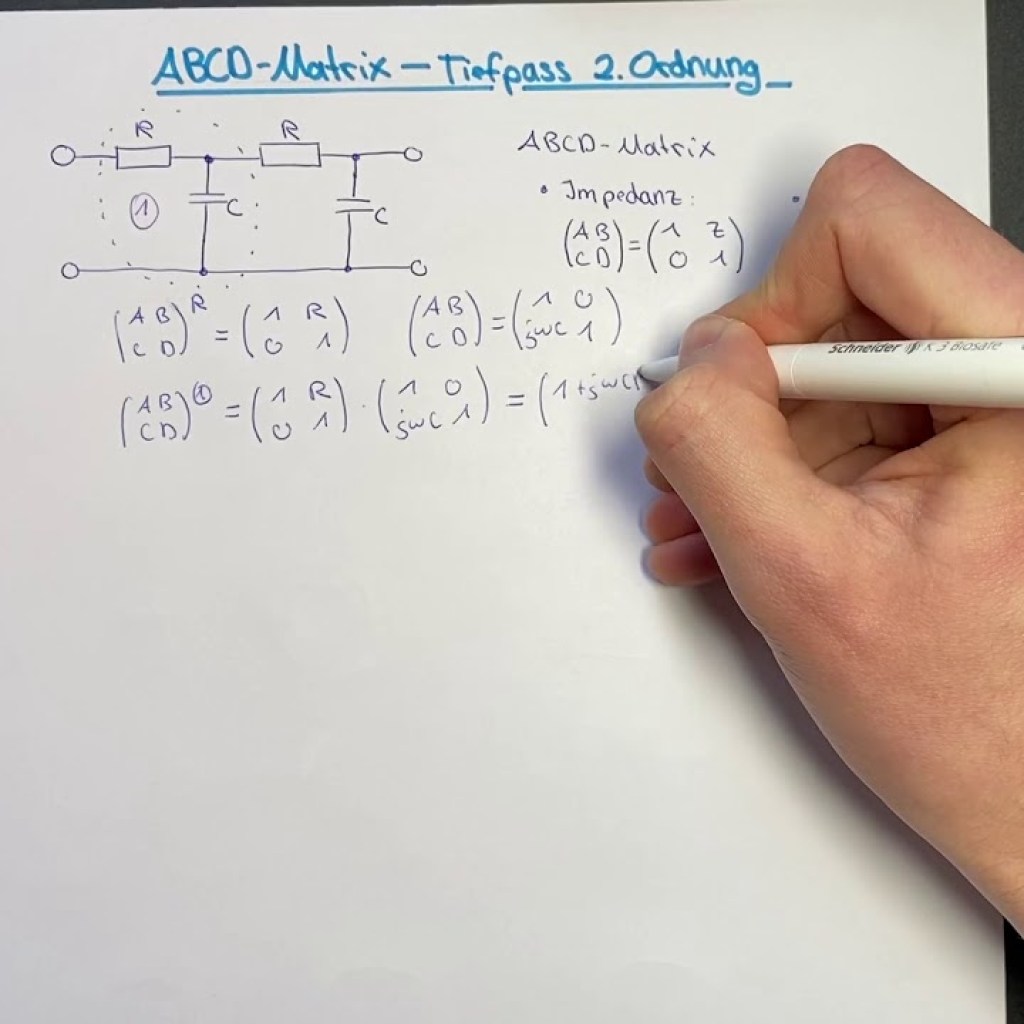
Source: YouTube
Understanding ABCD Matrices in Optics
Introduction to ABCD Matrices
ABCD matrices, also known as ray transfer matrices, are fundamental tools in optical physics used to describe the behavior of light as it travels through different optical elements. These matrices are particularly useful in both ray optics and Gaussian beam optics, providing a simplified approach to understanding complex optical systems.
Ray Optics and ABCD Matrices
In the realm of ray optics, ABCD matrices are employed to track the propagation of light rays with a transverse offset and angle relative to a reference axis. This method assumes small angles, adhering to the paraxial approximation, which ensures linear relationships between the ray’s initial and final positions and angles.
The ABCD matrix for an optical element is defined as:
⎡ A B ⎤ ⎢ C D ⎥
For instance, a thin lens with a focal length f is represented by the matrix:
⎡ 1 0 ⎤ ⎢-1/f 1⎥
This indicates that the ray’s offset remains unchanged, but the angle is modified based on the lens’s focal length.
Propagation Through Optical Systems
When light propagates through free space over a distance d, it is described by the matrix:
⎡ 1 d ⎤ ⎢ 0 1 ⎥
Here, the angle remains constant while the offset changes according to the initial angle. The determinant of any ABCD matrix is always 1, provided the refractive index is consistent across the input and output surfaces.
Gaussian Beam Propagation
ABCD matrices are also crucial for analyzing Gaussian beams, which are characterized by their beam radius and wavefront curvature. The complex beam parameter q integrates these characteristics:
1/q = -iλ/(πw²) + 1/R
When a Gaussian beam encounters an optical element, its parameter q transforms according to:
q' = (Aq + B)/(Cq + D)
ABCD Matrices for Common Optical Elements
- Air Space:
⎡ 1 d ⎤ ⎢ 0 1 ⎥
- Lens:
⎡ 1 0 ⎤ ⎢-1/f 1⎥
- Curved Mirror:
⎡ 1 0 ⎤ ⎢-2/R 1⎥
Combining Multiple Optical Elements
When dealing with complex optical systems, multiple ABCD matrices can be combined into a single matrix through matrix multiplication. The sequence of optical elements dictates the order of multiplication, as matrix operations are not commutative.
Example
Consider a setup where light first passes through a lens and then propagates through free space. The combined matrix is:
⎡ 1 0 ⎤ ⎡ 1 d ⎤ ⎡ 1 d ⎤ ⎢-1/f 1⎥ * ⎢ 0 1 ⎥ = ⎢-1/f 1-d/f⎥
Applications of ABCD Matrices
ABCD matrices are widely used in designing laser resonators, analyzing the stability of optical systems, and predicting the behavior of laser beams in various configurations. They provide insights into the evolution of beam parameters and the alignment sensitivity of optical setups.
Conclusion
ABCD matrices are invaluable in the study and application of optics, offering a streamlined method for analyzing and designing optical systems. By understanding these matrices, one can gain deeper insights into the behavior of light in complex environments.

Source: YouTube
Feel free to comment your thoughts.



